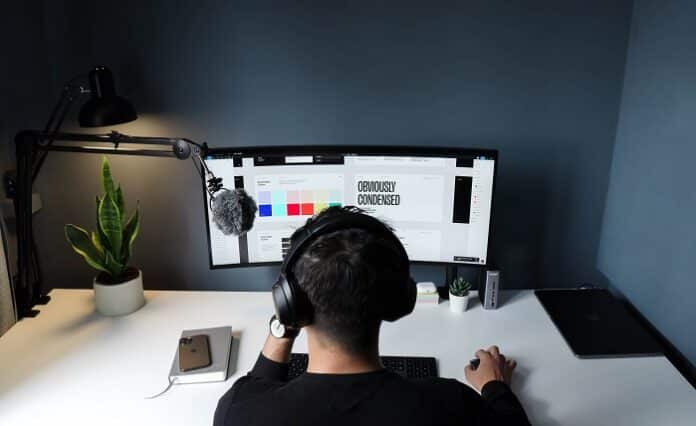In today’s dynamic and visually driven world, hiring graphic designers plays a pivotal role in creating a bridge between creativity and functionality. The seamless integration of these two aspects is crucial for producing designs that not only captivate the audience but also serve a purpose.
In this blog post, we will explore why hiring a graphic designer and balancing creativity and functionality is essential, providing some valuable tips for graphic designers to achieve this delicate equilibrium.
Why Is Balancing Creativity and Functionality Important?
Graphic design is not just about making things look visually appealing; it is also about conveying a message and serving a purpose. While creativity fuels innovation and grabs attention, functionality ensures that the design fulfils its intended objective. Balancing these two elements is essential for several reasons:
Effective Communication
A well-balanced design ensures that the intended message is communicated clearly and effectively. Whether it’s a logo, website, or marketing material, the design should resonate with the target audience while conveying the desired information.
User Experience
Functionality is crucial for creating a positive user experience. If a design is too creative but fails to provide a user-friendly experience, it might deter users rather than engage them. Striking the right balance ensures that the design not only looks good but also functions seamlessly.
Brand Identity
Creativity is at the core of building a unique and memorable brand identity. However, this creativity needs to align with the brand’s values and resonate with its target audience. A well-balanced design reinforces brand consistency and recognition.
Adaptability
In today’s diverse digital landscape, designs need to be adaptable across various platforms and devices. Balancing creativity with functionality ensures that the design remains effective and visually appealing across different mediums.
Best Tips for Balancing Creativity and Functionality – Graphic Designer
Now that we understand the importance of balancing creativity and functionality, let’s explore some practical tips for graphic designers to achieve this delicate equilibrium:
Understand the Project Objectives:
- Before diving into the creative process, ensure you have a clear understanding of the project objectives. What is the message that needs to be conveyed, and who is the target audience? This clarity will guide your creative decisions.
Know Your Audience:
- Tailor your designs to resonate with the intended audience. Consider the demographics, preferences, and behaviours of the target audience to ensure that your creative elements are not only visually appealing but also relatable and effective.
Maintain Consistent Branding:
- If you’re working on a project for a specific brand, ensure that your creative choices align with the brand’s identity. Consistency in branding builds recognition, trust, and loyalty. Use brand colours, fonts, and imagery consistently across different materials.
Prioritize User Experience (UX):
- User experience is paramount. A visually stunning design is ineffective if it doesn’t offer a positive user experience. Consider the user’s journey, navigation, and overall usability of your design. Make sure it is intuitive and user-friendly.
Whitespace is Your Friend:
- Don’t underestimate the power of whitespace. Adequate spacing between elements enhances readability, draws attention to key elements, and contributes to an overall clean and professional look. Whitespace is essential for both aesthetics and functionality.
Choose Fonts Wisely:
- Typography plays a significant role in balancing creativity and functionality. Select fonts that align with the overall design aesthetic while ensuring readability. Avoid overly decorative fonts that may compromise the clarity of the message.
Keep Up with Design Trends:
- Stay informed about the latest design trends, but use them judiciously. While incorporating trendy elements can add a contemporary touch to your designs, be cautious not to sacrifice timelessness and functionality for the sake of trends.
Collaborate and Seek Feedback:
- Collaboration with clients, stakeholders, and team members is essential. Regularly seek feedback to ensure that your design not only meets creative expectations but also aligns with the functional requirements. This collaborative approach enhances the overall quality of the design.
Test Across Platforms:
- Designs today need to be adaptable across various platforms and devices. Test your designs on different devices and platforms to ensure they maintain their visual appeal and functionality. Consider factors like responsiveness and scalability.
Stay Open to Iteration:
- Design is an iterative process. Be open to making adjustments based on feedback and testing. A willingness to iterate allows you to refine both the creative and functional aspects of your design, leading to a more polished final product.
Conclusion
Balancing creativity and functionality is the hallmark of a skilled graphic designer. By understanding the importance of this equilibrium and following the tips mentioned above, designers can create impactful visuals that not only capture attention but also serve their intended purpose. The synergy between creativity and functionality is what sets exceptional designs apart in today’s competitive landscape.
FAQs
Can a design be too creative?
While creativity is essential, it should not compromise the functionality or clarity of the design. Strive for a balance that engages the audience without sacrificing the purpose of the design.
How can I stay updated on design trends?
Regularly follow design blogs, attend conferences, and participate in online communities. Networking with other designers and staying informed about industry trends will keep your skills and knowledge up-to-date.
Why is user experience crucial in graphic design?
User experience directly impacts how users interact with a design. A positive user experience enhances engagement, while a poor one can lead to frustration and disinterest. Graphic designers should prioritize creating designs that are visually appealing and user-friendly.





